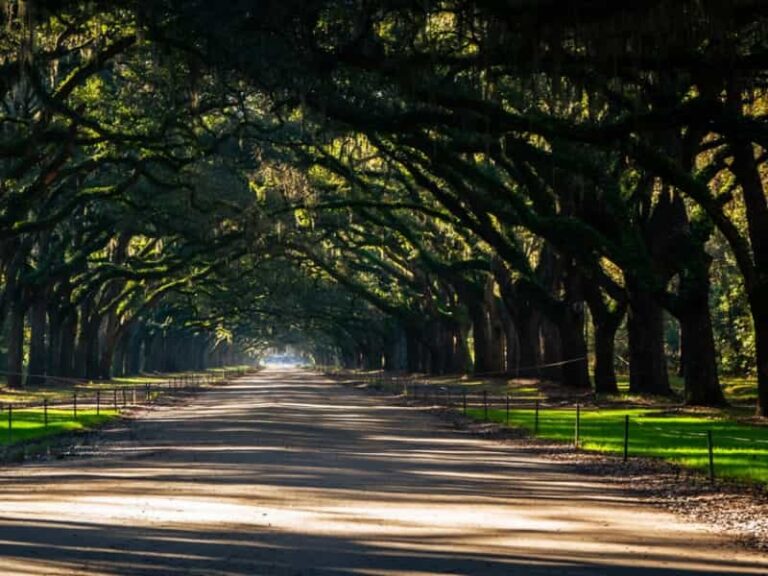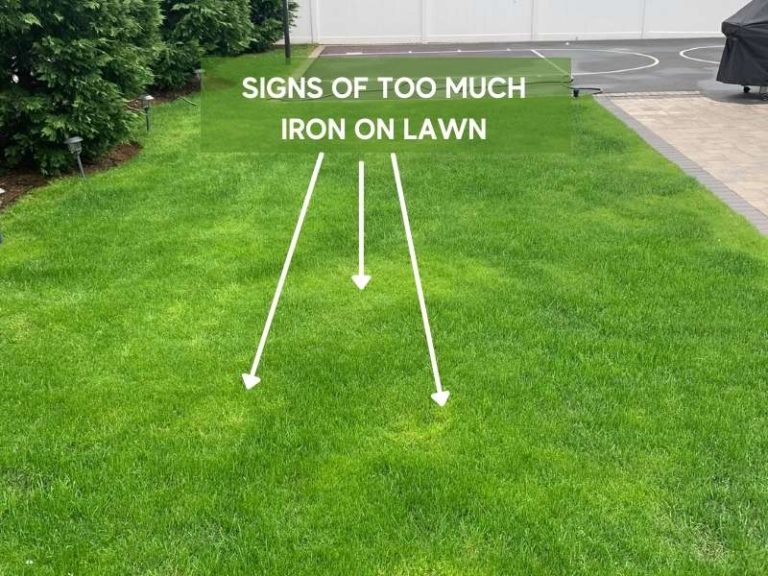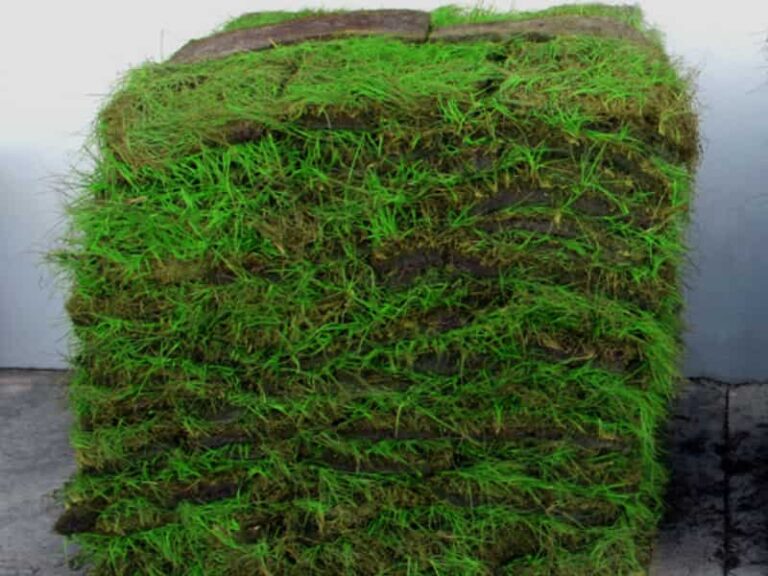How to Kill Mushrooms in Lawn
An experienced lawn care expert will tell you mushrooms signify a thriving fungi-rich ecosystem. The appearance of mushrooms on the lawn indicates the presence of spores in the soil. However, too many mushrooms disrupt the greenery of a lush lawn. They have to go when there seems to be a ‘mushroom invasion’ on your lawn.
Getting rid of dead wood and replacing it with plant material such as grass clippings effectively kills mushrooms on your lawn. Reducing excess moisture and exposing shaded areas to more sunlight also helps in limiting mushroom outbreaks.
What causes mushrooms in lawns?
Mushrooms in lawns are a sign of healthy soil. They indicate the presence of organic matter and healthy microbes. They are a natural occurrence if the surrounding meets the following conditions.
Shade
Mushrooms thrive in dark, cool, and humid shaded areas such as under trees and shrubs. They do not contain chlorophyll. Therefore, they don’t require light to grow. Dark and shaded areas also provide an optimum environment for mushroom spore reproduction. The spores spread to promote mushroom growth.
To tackle shading in your lawn;
- Regularly trim tree branches.
- Control overgrowth of shrubs through landscaping.
- Thin out branches and shrubs.
Exposing mushrooms to sunshine hinders their growth and spread.
Soil compaction
Compacted soils have limited aeration. Drainage is also hindered because soil particles are too closely packed. Aerating the lawn helps eliminate the flooding that provides the moisture necessary for mushroom growth.
De-compaction using plugs or the introduction of earthworms helps oxygen reach the grassroots easily, preventing fungi and promoting lush grass growth.
These are the tell-tale signs of soil compaction.
- There is flooding on your lawn
- Grass refuses to grow in specific areas
- Fungi such as Rhizoctonia Solani thrives.
Thatching
Thatch consists of organic materials such as dried leaves, grass clippings, and dirt. Excess thatch on your lawn absorbs moisture, creating the perfect environment for the spawning of mushrooms. While thatch may be suitable as manure when it decomposes, it also acts as mushroom bait.
Collect fallen leaves and remove dried grasses to prevent accumulation on the surface. Practice regular lawn maintenance to remove any excess organic matter in your grass.
Use large-scale dethatching too to remove thatch from expansive lawns.
The presence of old tree remains and animal waste
Areas of the lawn where trees previously existed have dead roots, even in the absence of a stump. The area must be adequately raked and aerated to improve drainage. Failure to rake and aerate leads to the growth of mushrooms and other fungi that could quickly spread to your grass and cause infections and diseases such as brown patch disease.
Animal waste on your lawn is prime grounds for mushrooms. Collect your pet’s droppings to prevent mushroom growth.
Common lawn mushroom species/ types
There are over fifty thousand mushroom species in the world. The growth of a specific mushroom species depends on your soil’s quality and composition and environmental conditions. Mushrooms are not necessarily bad on your lawn. However, unintended mushroom growth breaks uniformity in turfgrass. Furthermore, some mushrooms are poisonous to you and your pets.
These are the common identifiable species of lawn mushroom:
Lawyer’s wig
Also known as shaggy wig cap, this mushroom is from the genus Coprinus. The lawyer’s wig mushroom has a tall cylindrical appearance. The mushroom shrivels and turns inky black before sporulation and release of spores.
Identifying this mushroom is easy. Look for the fungus that resembles a lawyer’s wig cap or a white plump cylindrical mushroom that turns black in hours.
Puffball mushroom
This mushroom spreads up to two inches sideways. It has no stalk or gills. The puffball is a puffed mushroom head with an opening at the top to release spores. You will notice little puffballs on your lawn. A larger puffball mushroom that spreads up to a foot will grow in rare cases.
These fungi are neither parasitic nor infectious. While they may not cause harm to you and your pets, they will reduce the aesthetic value of your lawn.
Ringless honey mushroom
These mushrooms are most likely found in lawns with dead or decomposing trees. Ringless honey mushrooms appear in clusters from a central point. They have the following identifiable features:
- They appear tan or brown.
- They have gills.
- They produce white spores.
- They don’t have an annulus ring, a collar-like arc with specialized cells for dispersal of spores.
Green-spored parasol
The green-spored parasol mushroom is larger than most mushrooms. It stands at fourteen inches tall and up to twelve inches in diameter. Young green-spored mushrooms have ball-shaped caps resembling microphones on your lawn. The cap is white, dry, and scaly for larger mushrooms, with thick white flesh on the inside.
This mushroom’s spore print is green or grayish-green.
In line with mushroom growth, fairy rings also appear on your lawn. These are common in previously wooded areas where soil contains plenty of mushroom food.
The fairy rings are formed by sixty fungal species. They begin at a central point, expanding outwards in a circle.
How to get rid of mushrooms in the lawn
You can get rid of mushrooms in your lawn naturally using mechanical methods and adjustments to common lawn maintenance practices rather than using herbicides. Mushrooms cannot be classified as plants, thus the inefficiency of herbicides. While prevention works best, use the following methods to get rid of mushrooms on your lawn.
Hand pulling
Remove mushrooms from your lawn by pulling. Grab the entire mushroom from its root to prevent re-growth. Still, this method is tedious if you have more than a few mushrooms sprouting on your lawn.
Hand pulling as a maintenance measure is not enough if you don’t appropriately dispose of the uprooted mushrooms. Spores are spread quickly and could lead to re-emergence if you do not entirely destroy them.
Do not throw the plucked mushrooms in the garbage bin or place them in your compost heap. Tie the mushrooms in a plastic bag to prevent the spread of spores.
Regulating water application
The mushroom fungus grows more in damp conditions. Waterlogged areas provide the ideal environment for the growth of mushrooms and other fungi. Fungal infections such as brown patches and rust can be from flooding. Water the grass on your lawn once or twice a week. Apply water up to 1.5 inches in each watering cycle.
When you notice the growth of lawn mushrooms in your yard, check the surrounding water sources. Look out for any leaks and flooded spots.
Clearing tree branches and overgrown shrubs
Shade is a significant factor in the growth of mushrooms. Cutting tree branches and trimming shrubs reduces shade on your lawn, preventing mushroom growth. Sunlight prevents the growth of mushrooms since this fungus lacks chlorophyll.
Regular trimming of overgrown tree branches and shrubs in your lawn allows you to groom your lawn and look out for fungal attacks.
Keep your lawn clean.
Organic matter on your lawn is good for your turf, especially because it decomposes to become manure. However, excessive thatch composed of fallen leaves, branches, and needles is mushroom fodder. Collect all grass clippings from the surface after you mow your lawn.
Lawn maintenance reduces accumulated dead and decaying organic matter that houses fungi.
Controlled thatch goes a long way to nourishing your lawn.
Aerate the lawn
Aeration promotes air and water circulation in the soil. It is a de-compaction method that kills the fungal mat found below the soil surface. This means that mushrooms will be destroyed from the ground up, a more efficient approach to killing lawn mushrooms.
If you use aeration plugs, dispose of them immediately to prevent the reintroduction of spores that come into contact with the plugs inside the soil.
Use a nitrogen-rich fertilizer.
Nitrogen fertilizer can act as prevention and treatment. A fast-release nitrogen fertilizer works best. It fastens the rotting of food for fungi, getting rid of their food source. Even though plucking mushrooms get rid of them, it is not a permanent solution.
A nitrogen-rich fertilizer makes the environment unsuitable for the growth of mushrooms.
Why are fungicides not efficient?
The scientific reason behind the failure of fungicides against mushrooms is the lack of penetration into the soil. Hyphae are left untouched. Therefore, mushroom growth is not controlled. While fungicides might be responsible for dealing with superficial mushrooms, the root cause of mushroom growth is left unaddressed.
Besides, fungicides do not work efficiently on all species of mushrooms. The best treatment methods entail removal, proper disposal, and treatment of the soil.
Are lawn mushrooms poisonous to humans and dogs?
Discerning which lawn mushroom is poisonous or safe can be difficult unless you are a mushroom expert.
Dogs can eat mushrooms, but not from your yard. 99% of mushrooms might be safe to eat, but the 1% that’s toxic could have diverse effects on you and your pets.
Additionally, mushrooms edible to humans might be poisonous to pets. It’s best to steer away from lawn mushrooms altogether.
Safe edible mushrooms such as puffball and button mushrooms have mild earthy flavors. Inedible fungi in the wild have natural repellant mechanisms to prevent animals and humans from feeding on them. They are poisonous and might have unpleasant smells as a defense mechanism.
Some tell-tale signs that you are dealing with poisonous mushrooms are:
- White gills
- Presence of a volva, which is found beneath the ground
- Red-colored cap or stem
There’s minimal possibility of a poisonous mushroom growing in your yard. Although it’s rare, it is not entirely impossible. Unless you have a mushroom guide or you have mushroom expertise, keep your kids, pets, and yourself away from the consumption of lawn mushrooms.
References
- M. Le Strange, University of California Cooperative Extension, Tulare Co: Mushrooms and Other Nuisance Fungi in Lawns
- Curtis E. Young, Buckeye Yard & Garden Online, Ohayo State University: Mushrooms in the Yard: To eat or Not has been a Common Question
- T.H. Chan, Harvard University, School of Public Health: Mushrooms
- North American Mycological Association: Mushroom Poisoning in Dogs and Cats





